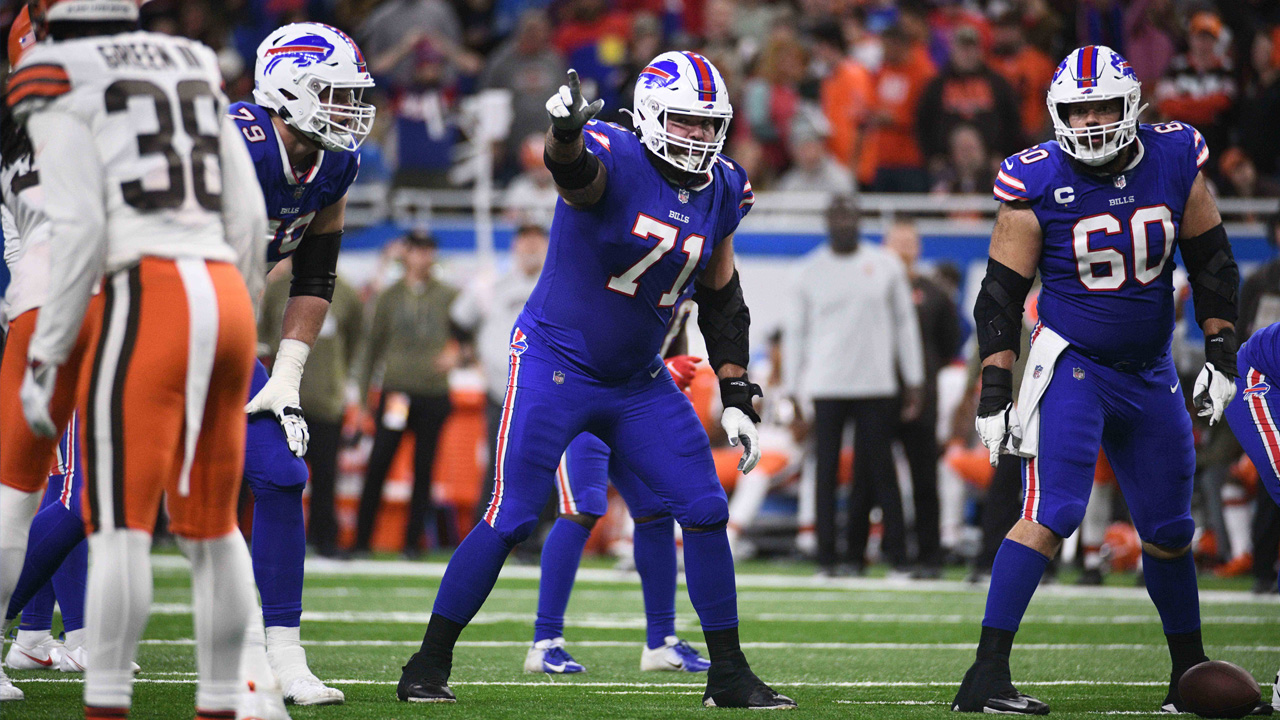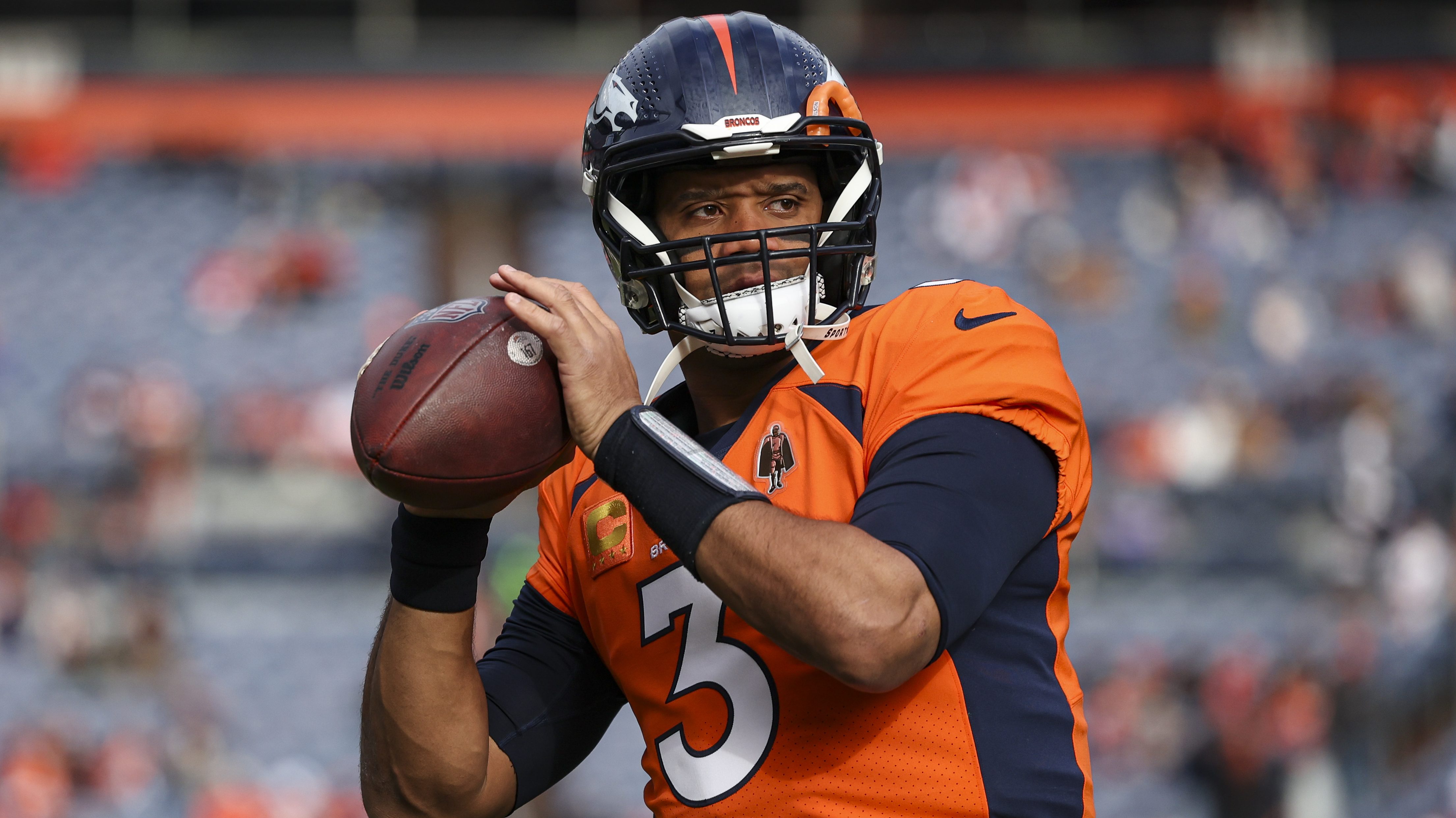The Bears' Monday night trade for veteran offensive lineman Ryan Bates didn't send shockwaves through the league, but the move could shift how general manager Ryan Poles chooses to attack free agency in a week.
The Bears entered the offseason with a glaring need at center. While most expected them to go hunting for a pricey veteran (Lloyd Cushenberry) in free agency, Bates allows the Bears the flexibility to allocate their salary cap space in different ways. Bates has experience playing at all three interior offensive line spots and gives the Bears a $4 million per year veteran center to rely on for the next two seasons.
While the most optimal scenario would be for the Bears to add a starting center and make Bates a swing interior option, it appears the Bears' likely path is to have Bates start at center and fill in their depth behind him.
Checking the center box with the $4 million per year Bates will allow Poles to allocate the Bears' $44 million in effective cap space to other positions rather than earmarking $9-12 million for a center.
That gives the Bears some options as far as big names, or at least notable names, they could target.
The Bears need wide receiver help. Yes, they will likely draft a receiver, but they have no depth behind DJ Moore and are expected to be in the market for a veteran No. 2 or No. 3, based on the buzz at the 2024 NFL Scouting Combine.
Tyler Boyd or Gabe Davis could be an option, or the Poles could potentially pay a bit more for Calvin Ridley to ensure the Bears have the necessary complement to Moore.
CHICAGO BEARS
Safety and running back are also a need, with New York Giants stars Xavier McKinney and Saquon Barkley topping the market.
The Bears still believe in Roschon Johnson, but they need another back who can be relied on in pass protection and as a receiving threat out of the backfield. Barkey would give them that, but is Poles interested in paying $10-12 million a year for a back with an injury history? Seems unlikely. There are options further down the pecking order in Tony Pollard, D'Andre Swift, and Devin Singletary, but Poles will have the option to swing for Barkley if he chooses. Again, that's unlikely.
Feeling out of the loop? We'll catch you up on the Chicago news you need to know. Sign up for the weekly Chicago Catch-Up newsletter.
The biggest impact the Bates trade could have is in making the Bears more likely to chase a big fish on the defensive side of the ball, like Miami Dolphins defensive tackle Christian Wilkins or Minnesota Vikings edge rusher Danielle Hunter.
Both Wilkins and Hunter are expected to command deals above $20 million per season. With multiple holes to fill in free agency, spending $20-plus million on a defensive game-changer and $10 million on a center always seemed unlikely. The Bates trade could make Poles more aggressive in trying to land Wilkins or Hunter since he'd still have around $20 million in space to play with after a deal.
While Wilkins, Hunter, and Barkley are the sexy names, I think the more likely impact of the Bates signing is more B-level free agents to spread the money out.
Here's a rough example using Pro Football Focus' contract projections and the OverTheCap salary cap calculator:
-Defensive end A.J. Epenesa (three years, $20.25 million, $6.75 million AAV)
-Tight end Noah Fant (three years, $24 million, $8 million AAV)
-Wide receiver Tyler Boyd (two years, $17.5 million, $8.75 million AAV)
-Safety Xavier McKinney (four years, $54 million, $13.5 million AAV)
Without trying to bake in whether deals are front-loaded or back-loaded, this would leave the Bears with around $10 million in cap space to add a running back and some depth on the lines.
If the Bears give Wilkins $25 million AAV or Hunter $21 million, they'll have to make tough decisions elsewhere. Add in the expected contracts for top centers Connor Williams or Lloyd Cushenberry, and the money runs out quickly.
The addition of Bates gives the Bears the ability to spread the money around to other positions or take a big swing should Poles identify a game-changer worth the high price tag. That path was harder to envision when a large chunk of the Bears' cap space was earmarked for a center.




